MARIANI’S
Virtual
Gourmet
MAY 1, 2022
NEWSLETTER
ARCHIVE

"The First Prosciutto of Spring" by John Mariani
IN THIS ISSUE
DUBLIN 2022
By John Mariani
NEW YORK CORNER
EL QUIJOTE
By John Mariani
ANOTHER VERMEER
CHAPTER 17
By John Mariani
NOTES FROM THE WINE CELLAR
Ricasoli Chianti Gran Selezione
By John Mariani
❖❖❖
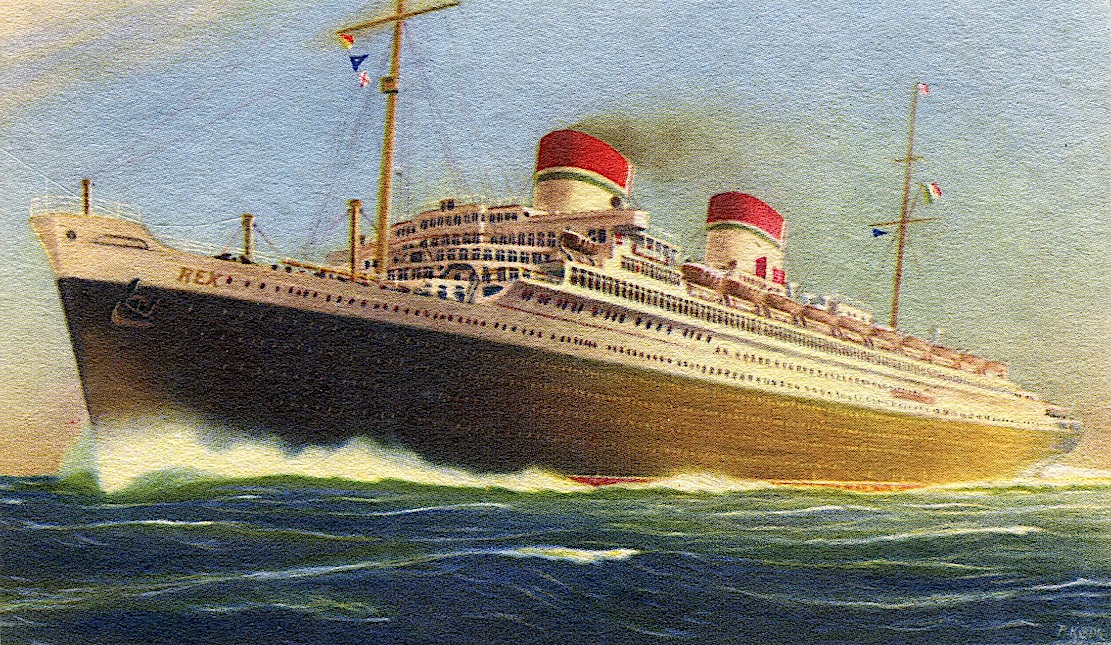 will discuss the glamorous
oceanliners of the 1930s through 1950s. Go
to: WVOX.com.
The episode will also be archived at: almostgolden.
will discuss the glamorous
oceanliners of the 1930s through 1950s. Go
to: WVOX.com.
The episode will also be archived at: almostgolden.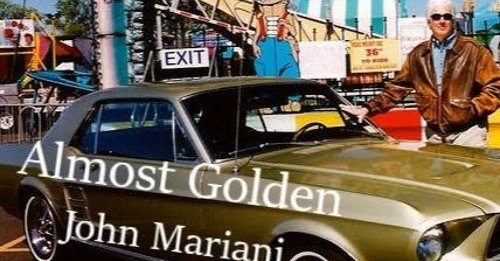
❖❖❖
DUBLIN 2022
By John Mariani
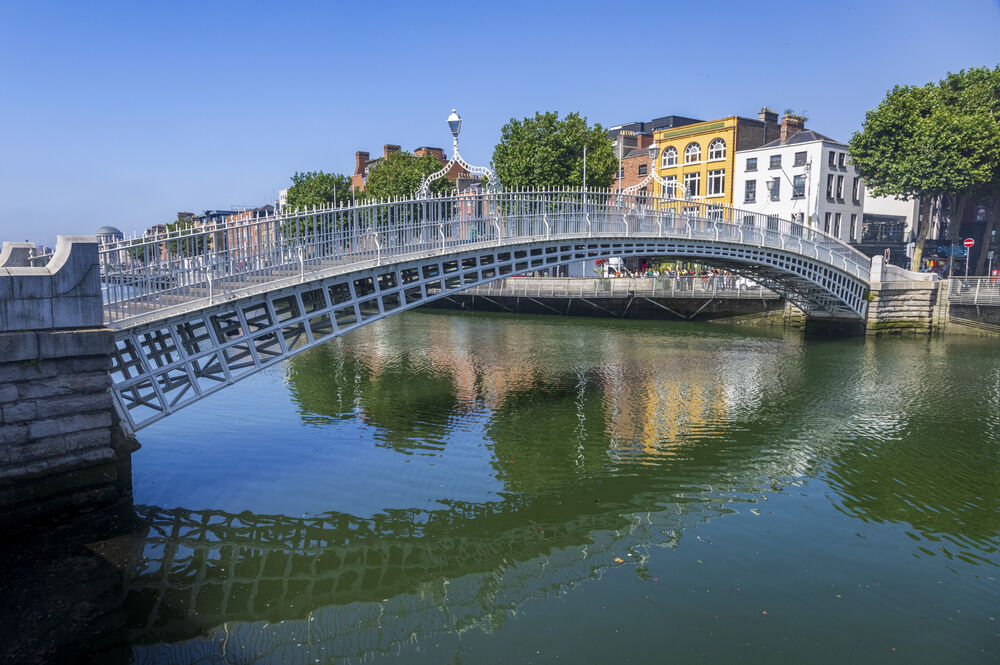
One
may peruse in vain volumes of famous
quotations and find precious little in
praise of Ireland by its own most famous
authors, whose sad, tough love for
their native land was always being crashed on
the rocks of history. James
Joyce (below), the willing expatriate
who never returned to Ireland, spat, “Ireland
is
the old sow that eats her farrow,” while Yeats
in his day insisted Ireland’s
romantic past was already “dead and gone.”
George Bernard Shaw 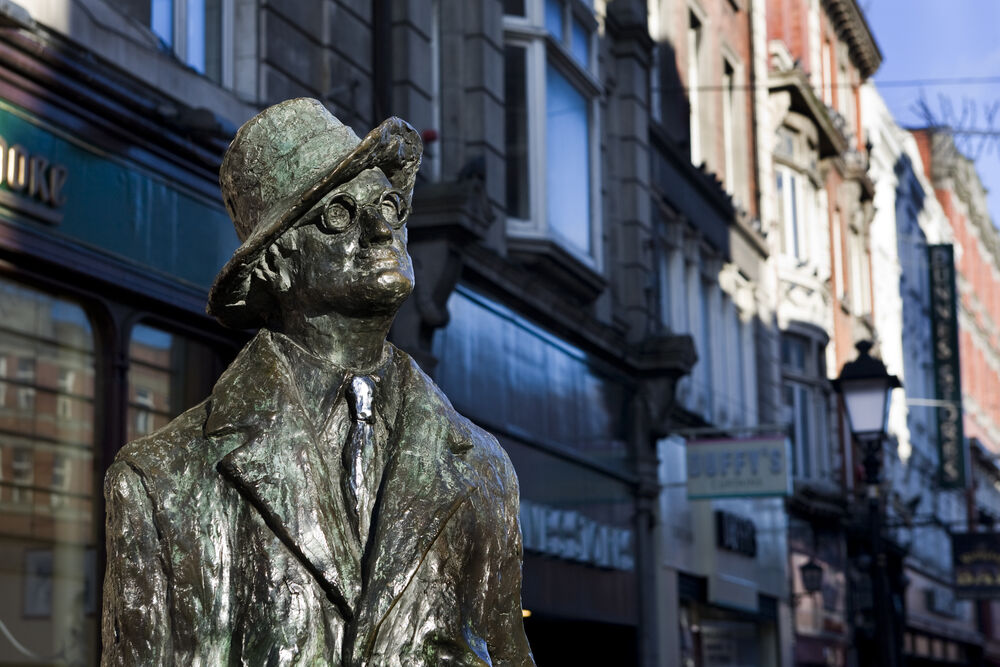 was most
sanguine when he said, “Put an Irishman on the
spit and you can always get
another Irishman to turn him.” Oscar Wilde
somewhat less so: “We Irish are too
poetical to be poets; we are a nation of
brilliant failures, but we are the
greatest talkers since the Greeks.” Poet and
rebel Padraic Pearse sounded barely
hopeful
was most
sanguine when he said, “Put an Irishman on the
spit and you can always get
another Irishman to turn him.” Oscar Wilde
somewhat less so: “We Irish are too
poetical to be poets; we are a nation of
brilliant failures, but we are the
greatest talkers since the Greeks.” Poet and
rebel Padraic Pearse sounded barely
hopeful 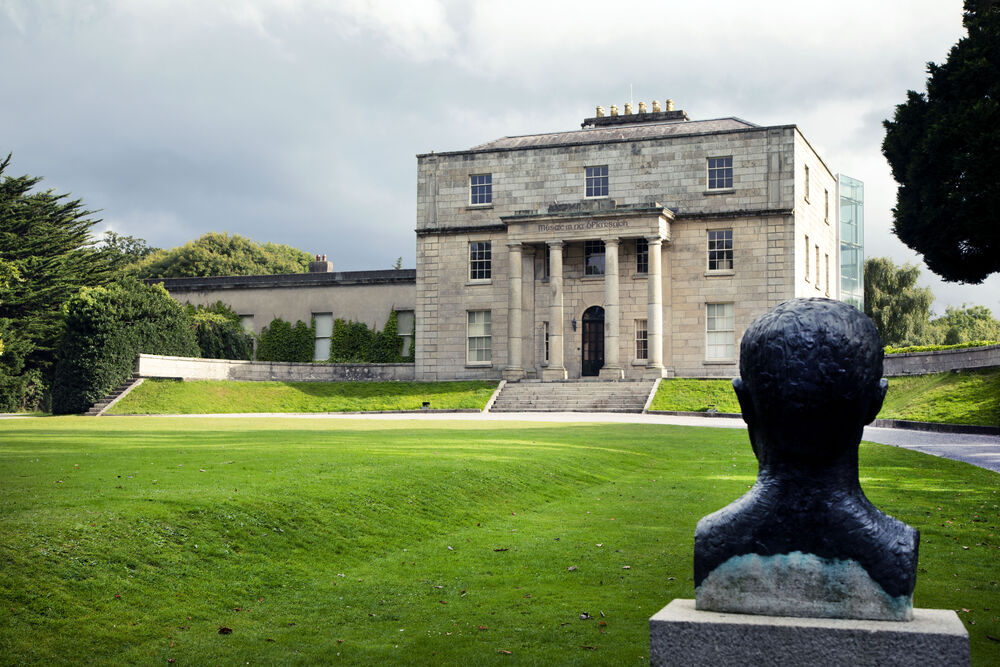 after
the failure of the 1916 rebellion in Dublin
when he insisted,
“You cannot conquer Ireland. You cannot
extinguish the Irish passion for
freedom. If our deed has not been sufficient
to win freedom, then our children
will win by a better deed.”
after
the failure of the 1916 rebellion in Dublin
when he insisted,
“You cannot conquer Ireland. You cannot
extinguish the Irish passion for
freedom. If our deed has not been sufficient
to win freedom, then our children
will win by a better deed.”
Eventually, Ireland proved him right and
did win its independence, entering the modern
world on bandy legs until well
after World War II (it didn’t help that Ireland
declared neutrality and
extremist elements of the IRA worked with German
intelligence against the
British). Yet, despite being sentimentally
overly characterized as a shamrock
green land of leprechauns and fiddlers, modern
Ireland’s true spirit is most
manifest in the capital city of Dublin, which
today is one of the most splendid
and certainly most deeply cultural cities in
Europe. I suspect that if Joyce
and the rest were alive now, their sentiments
would be far more positive, even
swell with pride in what the last two
generations have achieved. (Indeed, all
those authors now have their monuments dotted
around Dublin, and Pearse even
has his own museum [right].)
The
city has never looked better,
especially since the disruptive gash of
construction to entrench the center’s
tram system is now gone. Most of the
city’s new construction is happening
north of the Liffey River, long the
poorest and derelict neighborhoods. The new
glass-and-steel bank and office
buildings show no more architectural distinction
than do any other European
cities’ and hardly fit in at all with Dublin’s
architectural traditions.
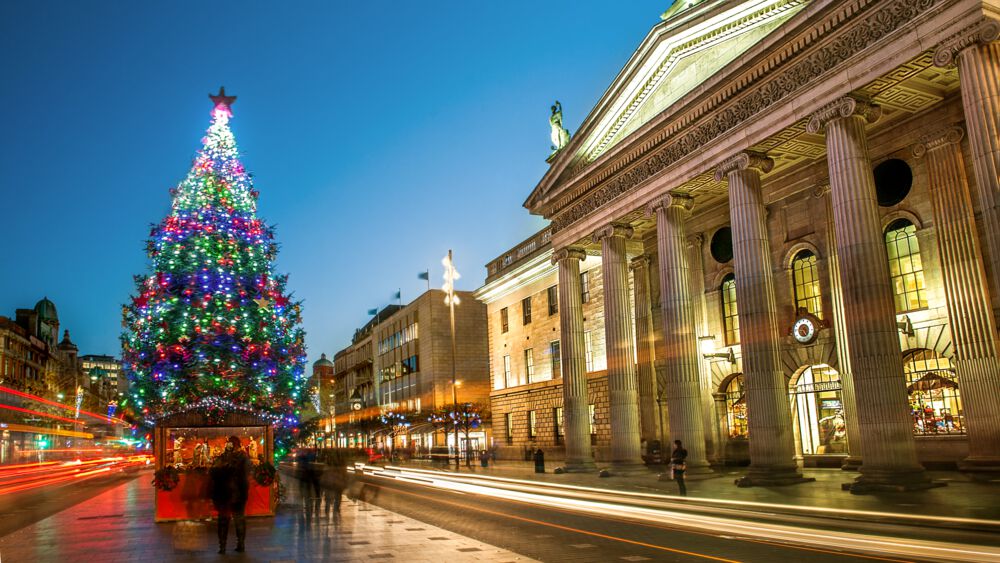 Yet,
the north, reached across the
happy Ha’Penny Bridge, has come to
life on its own, with a whimsical
statue of Joyce right there on the main drag of
O’Connell Street (left). There
are still commemorative bullet holes in
the walls left over from the Easter Rebellion of
April 1916 and the famous Post
Office defense site is well worth visiting. St.
Mary’s Church has been saved by
being transformed into a vast pub and restaurant
called The Church on Jervis
Street, where you may pat the bronze pate of
porter-maker Arthur Guinness,
whose presence is felt on every corner of the
city. Farther along there is now
the 390-foot stainless steel Spire of
Dublin, which no one sees the
significance of beyond replacing an 1809 pillar
topped with British Admiral
Horatio Nelson, whom the Irish loathed and who
the prescient Irish poet Louis
MacNeice said was “watching his world collapse.”
Yet,
the north, reached across the
happy Ha’Penny Bridge, has come to
life on its own, with a whimsical
statue of Joyce right there on the main drag of
O’Connell Street (left). There
are still commemorative bullet holes in
the walls left over from the Easter Rebellion of
April 1916 and the famous Post
Office defense site is well worth visiting. St.
Mary’s Church has been saved by
being transformed into a vast pub and restaurant
called The Church on Jervis
Street, where you may pat the bronze pate of
porter-maker Arthur Guinness,
whose presence is felt on every corner of the
city. Farther along there is now
the 390-foot stainless steel Spire of
Dublin, which no one sees the
significance of beyond replacing an 1809 pillar
topped with British Admiral
Horatio Nelson, whom the Irish loathed and who
the prescient Irish poet Louis
MacNeice said was “watching his world collapse.”
Dublin Castle in southwest Dublin dates
(after a devastating fire) to the 17th century,
with state apartments and St.
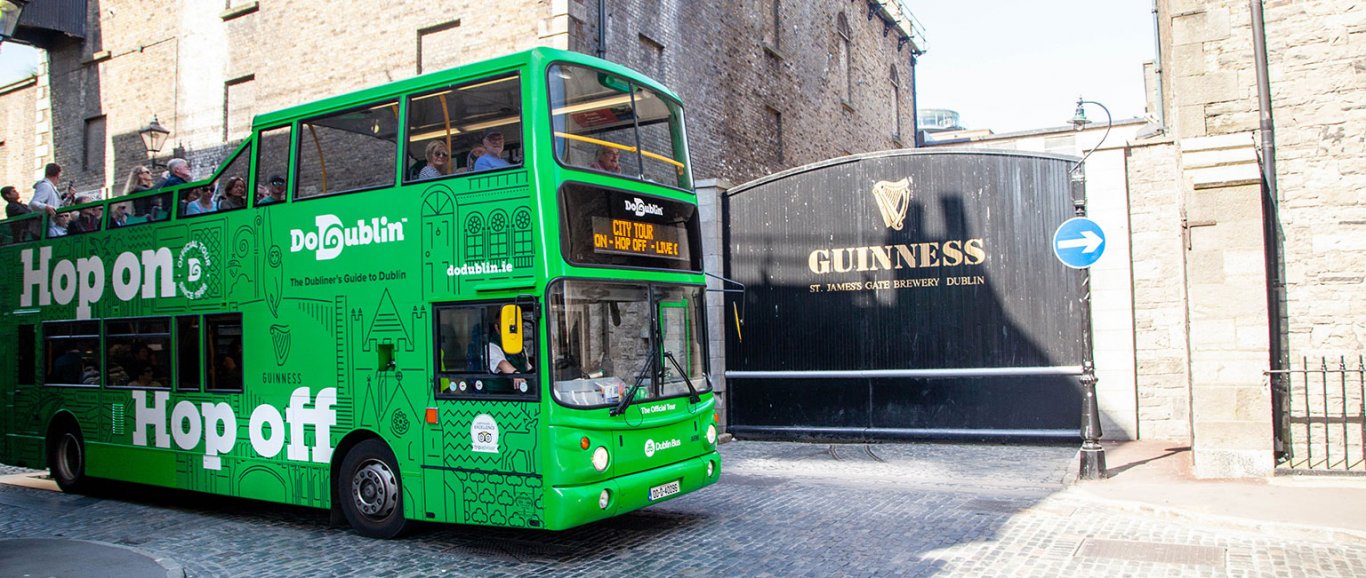 Patrick’s
Hall.
Patrick’s
Hall.
The best way to get around town is with
a Hop-on/Hop-off bus
ticket, discounted
if you book on-line.
The route runs for one hour 45 minutes and
26 stops,
with trained guides, stopping at all the
city's top attractions, including
Dublin Zoo, the Guinness Storehouse,
Trinity College and EPIC: The
Irish Emigration Museum (of which more in a
moment), along with sites
where Joyce, Wilde and Samuel Beckett (among
others) lived.
(Buses for the tour start at 9 a.m.
daily
from outside Dublin Bus Head Office at 59
Upper O'Connell Street; the last tour
of the day departs stop 1 at 5 p.m. during the
Autumn/Winter and 7 p.m. during
Summer.) Kids go free and there is free
entrance to the delightful Little
Museum of Dublin at St. Stephen’s Green,
whence you can also take a fine,
guided walking tour of this expansively
beautiful public space.
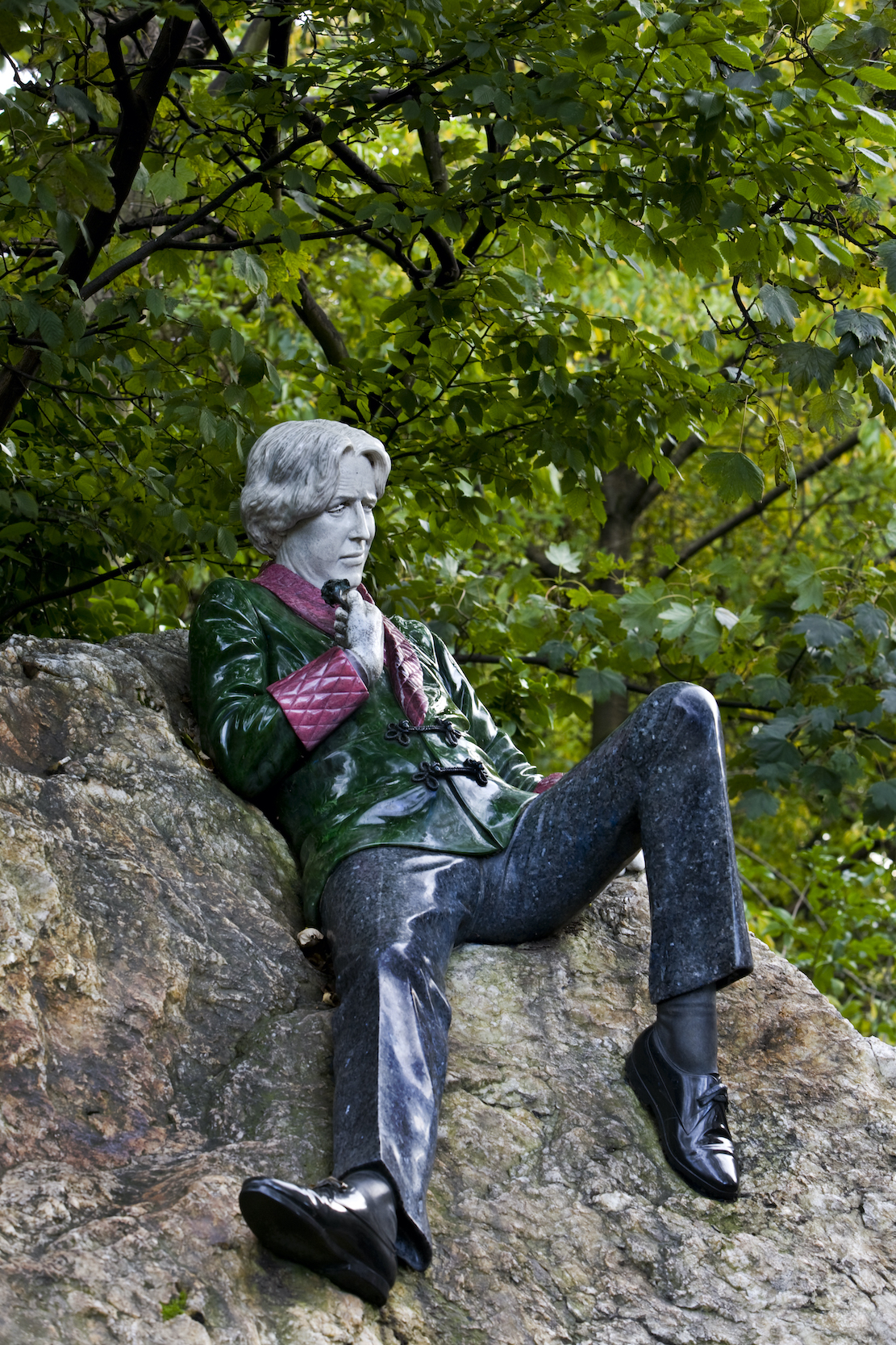 The
city’s other great green is Merrion
Square, twelve acres of it, with a statue of a
lounging Oscar Wilde (left) giving the
passersby what is either a wry smile or a
critical smirk. Ringing the Square are many of
Dublin’s finest townhouses,
hotels and restaurants. Incidentally, many of
the once brightly colored Dublin
doorways, made famous as a poster, have reverted
to the historic black color
they were before the 1960s ad promotion for the
city. (I’ll report on Dublin’s
hotels and restaurants in an upcoming column.)
The
city’s other great green is Merrion
Square, twelve acres of it, with a statue of a
lounging Oscar Wilde (left) giving the
passersby what is either a wry smile or a
critical smirk. Ringing the Square are many of
Dublin’s finest townhouses,
hotels and restaurants. Incidentally, many of
the once brightly colored Dublin
doorways, made famous as a poster, have reverted
to the historic black color
they were before the 1960s ad promotion for the
city. (I’ll report on Dublin’s
hotels and restaurants in an upcoming column.)
Hop on and off if you like, but Dublin
has a small center and you can stroll around it
in mere hours, unless you spend
your time at the better-than-ever National
Museum of archaeology and
Irish history and the National Gallery,
with its priceless The Taking
of Christ by Caravaggio.
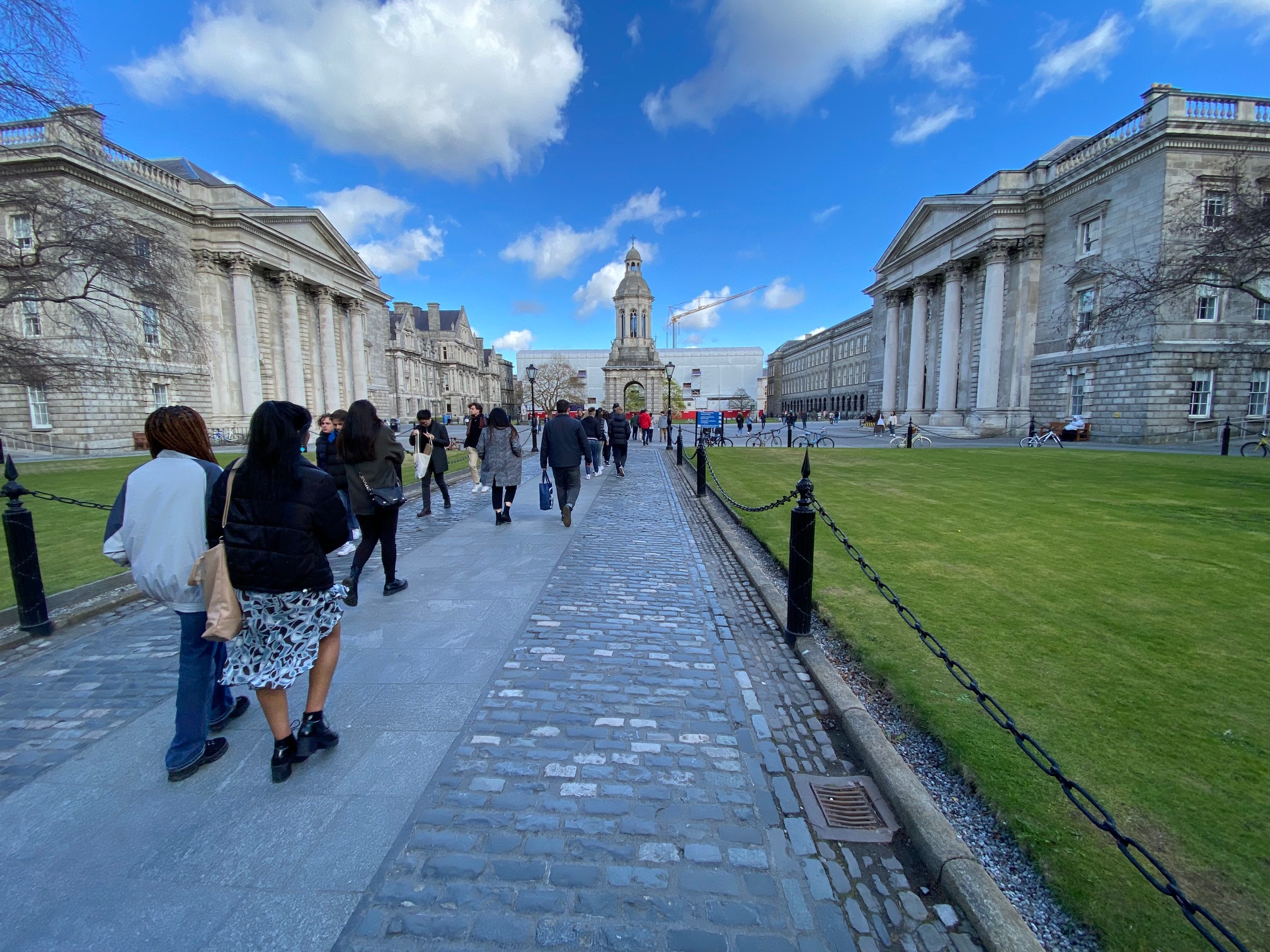 Trinity
College (below) is so lovely and
green this time of year, and its great
Long Library is the magnificent home to the
uniquely beautiful medieval Book of
Kells, a new page of which is turned each day.
(Tickets are necessary.)
Trinity
College (below) is so lovely and
green this time of year, and its great
Long Library is the magnificent home to the
uniquely beautiful medieval Book of
Kells, a new page of which is turned each day.
(Tickets are necessary.)
A little away from downtown is St.
Patrick’s Cathedral, where Jonathan Swift was
Dean, and beyond that
the Guinness Storehouse, with its rich
history, superb exhibits and a
vast, panoramic view of the city from the
circular bar. There is also
an Irish Whiskey Museum worth a visit.
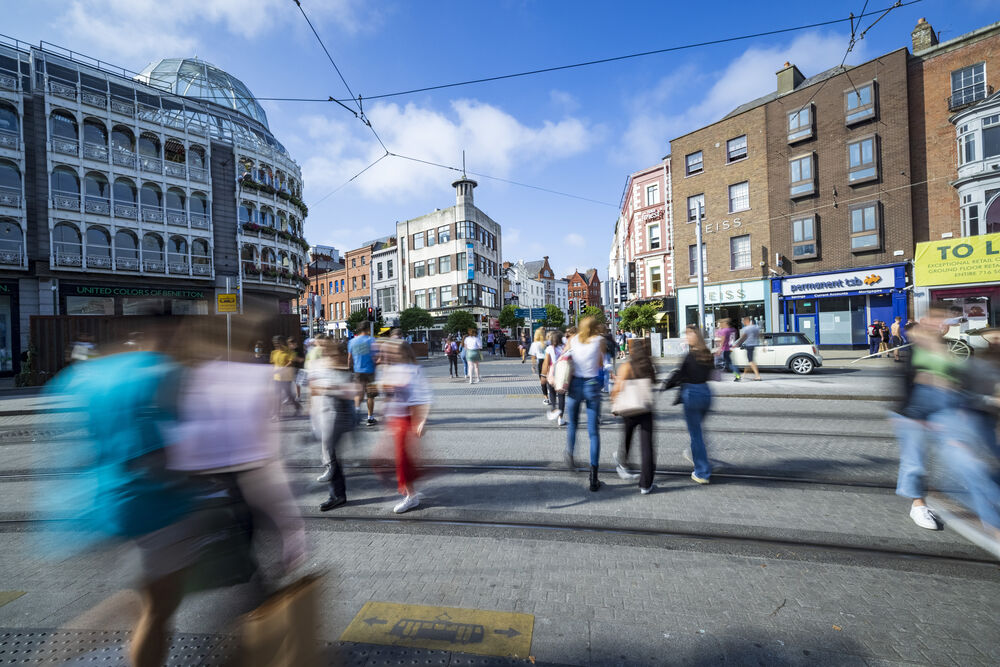 Downtown,
the main thoroughfare, closed
to cars, is Grafton Street (left),
made famous in many Irish lyrics and songs,
originally
a connecting lane dating to the 1700s and once a
high-end residential stretch.
Since then it’s become a fashionable shopping
street with as many international
as Irish brands and those persistent street
performers called buskers of
various talents, which once included Bono.
There’s a Molly Malone statue at one
end—she of the “alive-alive-o” fishmongers’
ditty—and what was once called the
Dandelion Market has become the wrought-iron
multi-level
St. Stephen’s Green Shopping Centre.
Downtown,
the main thoroughfare, closed
to cars, is Grafton Street (left),
made famous in many Irish lyrics and songs,
originally
a connecting lane dating to the 1700s and once a
high-end residential stretch.
Since then it’s become a fashionable shopping
street with as many international
as Irish brands and those persistent street
performers called buskers of
various talents, which once included Bono.
There’s a Molly Malone statue at one
end—she of the “alive-alive-o” fishmongers’
ditty—and what was once called the
Dandelion Market has become the wrought-iron
multi-level
St. Stephen’s Green Shopping Centre. 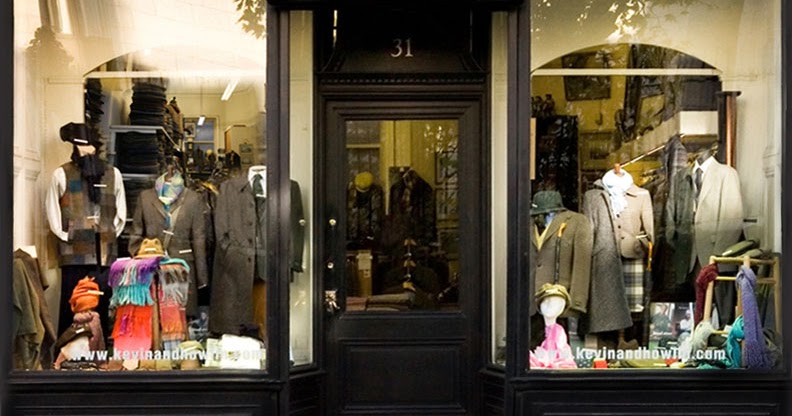
Perpendicular to Grafton Street are
several smaller streets with a better selection
of native Irish goods. (In
fact, I saw several “out of business” signs in
the windows of international
fashion boutiques on those streets.) Some of the
best include The Irish Store,
The Woolens Mills and CLOTH Dublin. For unique
Donegal tweeds and men’s and
women’s country clothing, I always make a visit
to Kevin & Howlin (right) on
Nassau
Street, across from Trinity, where each month
brings entirely new colors and
weavings of sturdy tweeds to last a lifetime,
even in Irish weather.
One of my favorite stops
off
Grafton is Sheridan’s Cheesemongers on Anne
Street, which has become so
successful that there are now branches in other
Irish cities. There you’ll find
small production Irish cheeses as nowhere else,
with delightful names like
Carrig Bru, Wicklow Bán and Drunken Saint.
And, if you’re going abroad, they’ll
shrink-wrap the cheeses so as to be
allowed through customs.
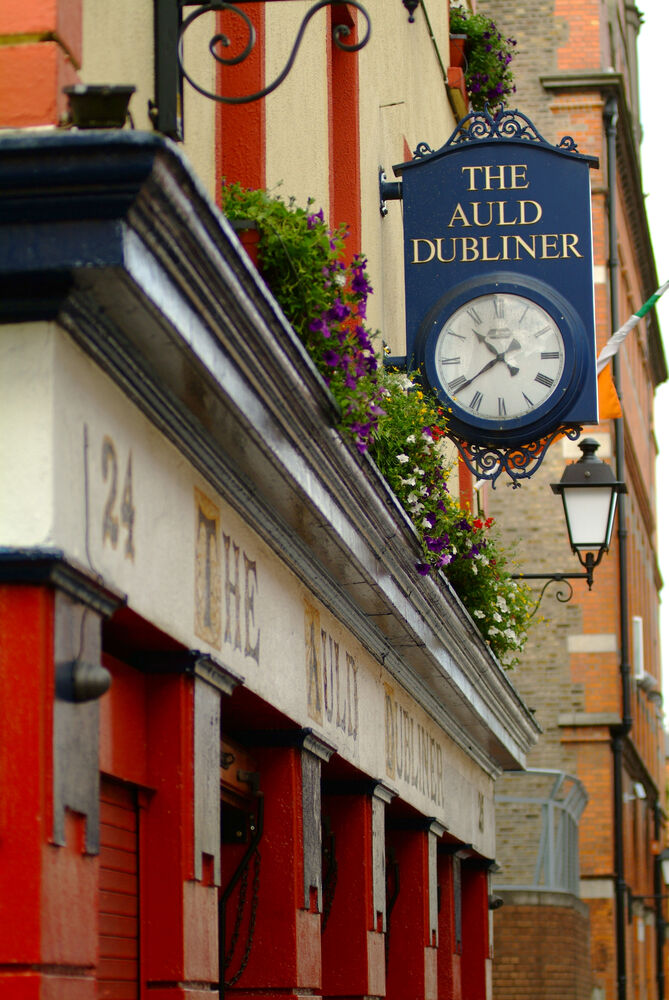 Over
the past twenty years the
neighborhood known as Temple Bar, near the
Houses of Parliament, has become a
crucible for the arts and entertainment, with
all the expected pubs and
restaurants (the Auld Dubliner is a
little quieter than some and has good
music) that service locals and visitors, who are
always heartily welcomed. It’s a
youthful area of Dublin, with the Ark Children's
Cultural Centre and Irish Film
Institute, along with the very fine
Irish Photography Centre, the Gaiety
School of Acting, IBAT College
Dublin, the New Theatre. The
Cow's Lane Market is known for its
fashion and design offerings on Saturdays.
Over
the past twenty years the
neighborhood known as Temple Bar, near the
Houses of Parliament, has become a
crucible for the arts and entertainment, with
all the expected pubs and
restaurants (the Auld Dubliner is a
little quieter than some and has good
music) that service locals and visitors, who are
always heartily welcomed. It’s a
youthful area of Dublin, with the Ark Children's
Cultural Centre and Irish Film
Institute, along with the very fine
Irish Photography Centre, the Gaiety
School of Acting, IBAT College
Dublin, the New Theatre. The
Cow's Lane Market is known for its
fashion and design offerings on Saturdays.
To put Dublin’s shadier past in
perspective, the city has declared it will turn
one of the last of what were
called the Magdalene Laundries, on McDermott
Street, into a museum showing the
true horrors of a Church-run workhouse for women
who strayed from the rules,
some prostitutes, some pregnant out of wedlock,
some nothing more than flirts
turned in by their parents into a life of years
of literal slavery in order to
save their souls. Only now in Ireland could the
thought emerge to preserve such
a hellish place as a way of coming to grips with
an unsavory past. 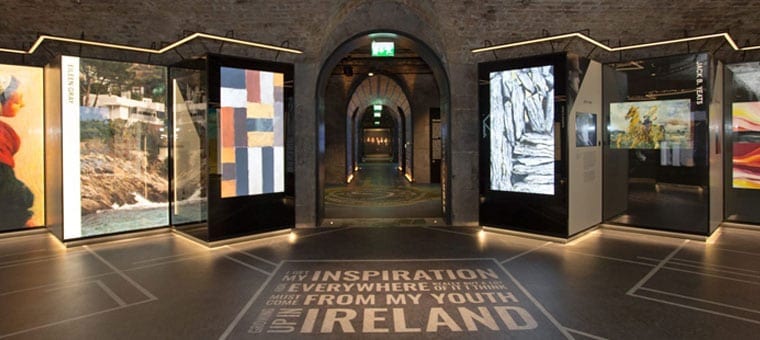
Far more inspiring, however, is the new
EPIC: The Irish Emigration Museum (below),
which, like the Titanic Museum in Belfast,
is a state-of-the-art living museum of history
focused on those who emigrated
during the agonies of the potato famine of the
1840s, in which millions starved
to death while millions more escaped to America
and Australia on small
transport boats, living below decks for weeks,
even months. One of those boats,
though a replica, is just outside the museum,
called the Jennie Johnston, whose captain was
among the most humane of his
profession, whose thousands of passengers—five
to a bunk—over several years all
survived journeys in which sickness, storms and
bare subsistence hung over
everyone. Others on lesser ships had a good
chance of never making it to their
destination alive.
Otherwise, within the museum
there are
thousands of hours of recording of immigrants,
letters, a family history
center, interactive touch screens, music and
dance, with impressive walls of
hundreds of famous Irish men and women, from
John F. Kennedy to Ronald Reagan
to Joe Biden, along with Irish-Americans
like
Gene Kelly, Kurt Cobain, Walt Disney and John
Ford, all presented as well
as anything at Washington’s Smithsonian.
❖❖❖
EL
QUIJOTE
Chelsea
Hotel
226 West 23rd Street
212-518-1843
By John Mariani
Photos by Eric Medsker
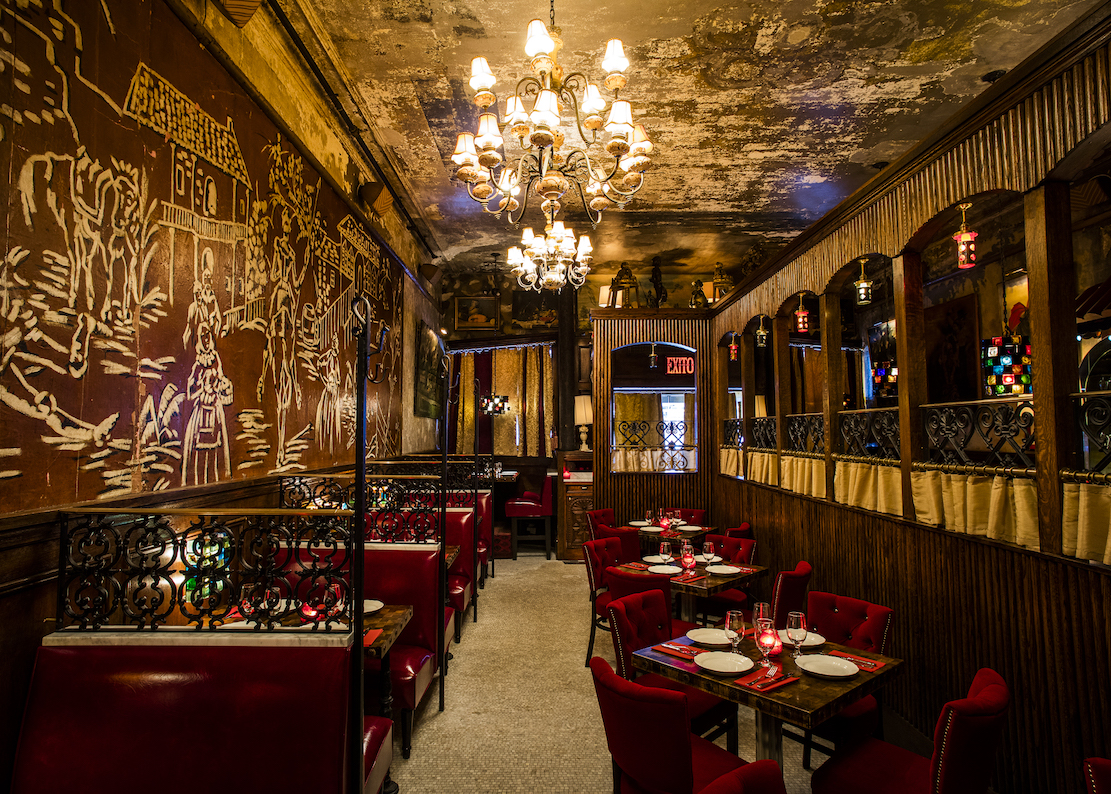
The rollicking history of the
Chelsea
Hotel, which opened as co-op apartments in
1885 before taking in guests as of
1905, has given this once-rundown building
a reputation for being archaically
trashy and really cool all at the same
time. Its heyday was back in the 1950s
and decades following as a cheap place to
stay put for a while if you were a
close-to-starving artist, but that cachet
brought in names like Thomas Wolfe,
Dylan Thomas, Arthur Miller and Tennessee
Williams and later a parade of hipsters
and rock stars like Janis Joplin (left)
and Bob Dylan. Andy Warhol shot his
unwatchable movie Chelsea Girls there.
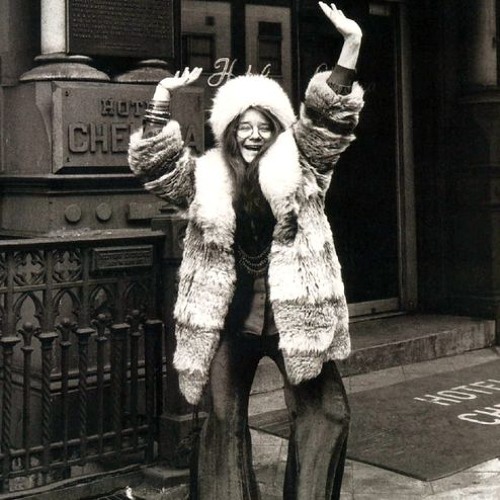 Since
1930 the hotel has also been home
to El Quijote, one of a slew of Spanish
restaurants that once dotted the city
(most owned by Cubans) with names like El
Chico, Jai Alai, El
Flamenco, Fundador, Seville and
Havana-Madrid, all long gone. Certainly El
Quijote did not survive on the basis
of its food, which was, at best, a tepid
rendering of Spanish items, all with
tinted yellow rice on the side.
Since
1930 the hotel has also been home
to El Quijote, one of a slew of Spanish
restaurants that once dotted the city
(most owned by Cubans) with names like El
Chico, Jai Alai, El
Flamenco, Fundador, Seville and
Havana-Madrid, all long gone. Certainly El
Quijote did not survive on the basis
of its food, which was, at best, a tepid
rendering of Spanish items, all with
tinted yellow rice on the side.
Four years ago new owners came in,
closed
El Quixote, revamped it—meaning they cleaned
the place up and scraped off
decades of smoke and grime—without
compromising the funky charm of the long,
narrow dining room. Linoleum was ripped up
to expose a white tile floor, and a
folkloric
wall mural was uncovered on which a spindly
Don Quixote prepares to joust with
a windmill. The scruffy
ceilings will give you a feeling of what the
place used
to look like. Sadly, the tablecloths are
gone and the napkins are now cheap
paper.
Sunday Hospitality restaurant group
and
consultant Charles Seich have taken over and
brought in chef Byron Hogan (right),
who
has long experience cooking in Spain and is
demanding as to the products and
ingredients he buys, especially the seafood.
His is the kind of menu you’d now
find in the better restaurants of Madrid,
Bilbao and San Sebastián, definitely
not modernist but solidly traditional,
prepared with flair and a welcome higher
level of seasoning than you often find in
Spain, especially a judicious use of
chile peppers.
It’s a small restaurant and
reservations are tough to come by, unless
you want to dine early, then catch a
movie or one of several flamenco festivals
held in Chelsea, or late, which
seems more of a Chelsea Hotel kind of thing
to do. (A lobby bar, not part of El
Quijote, is due to open soon.) You’ll be
very cordially greeted, and, despite
the high ceilings, the noise level allows
for near-normal conversation, which
would be improved if they turned off the
unidentifiable throbbing music no one
could possibly want to hear.
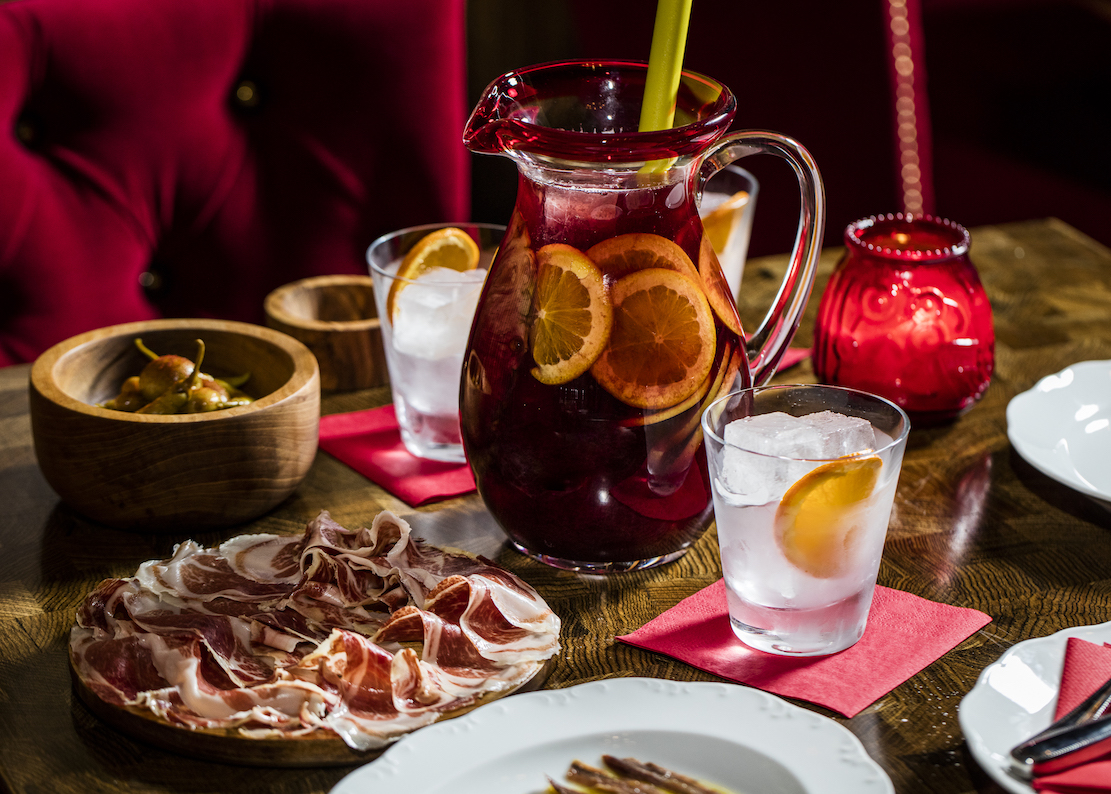 The
service staff is knowledgeable—our
waiter was Spanish—and food and beverage
manager Zaneta Ramcharran makes
everything run smoothly. The all-too-red
jackets worn by waiters make them look
like interns on the floor of Wall Street.
The
service staff is knowledgeable—our
waiter was Spanish—and food and beverage
manager Zaneta Ramcharran makes
everything run smoothly. The all-too-red
jackets worn by waiters make them look
like interns on the floor of Wall Street.
The wine list, overseen by Claire
Paparazzo, is solid with modern Spanish
labels, and the sangria is really
delicious, flavored with cinnamon and given
a sweet-sour edge with balsamic
vinegar. Our table of four got two glasses
each from a pitcher ($48).
The menu is not categorized by first
and
main courses, though the listings at the top
include a number of  tapas
dishes,
from olives and guindilla
pickled
chile peppers ($9) to a very savory pan
con tomate of toasted country bread
smeared with garlic, olive oil and a
rich tomato confit ($12). There’s a plate of
three Spanish cheeses with quince
paste and almonds ($18), and the choice of
either Serrano ($19) or Ibérico
($60) ham. Not to be missed are the creamy,
piping hot bacalao (cod or ham)
croquettes ($13/$16) that I could make an
entire meal out
of.
Photo: John Mariani
tapas
dishes,
from olives and guindilla
pickled
chile peppers ($9) to a very savory pan
con tomate of toasted country bread
smeared with garlic, olive oil and a
rich tomato confit ($12). There’s a plate of
three Spanish cheeses with quince
paste and almonds ($18), and the choice of
either Serrano ($19) or Ibérico
($60) ham. Not to be missed are the creamy,
piping hot bacalao (cod or ham)
croquettes ($13/$16) that I could make an
entire meal out
of.
Photo: John Mariani
One of my favorite Basque dishes is
fish,
most often rodaballo
(turbot), whose
gelatin is whipped with garlic and olive oil
to make a rich mayonnaise. At El
Quijote, it is made with char-grilled merluza
(hake) with piquillo
peppers and
crispy but sweet, pulpy garlic ($25), and
it’s very good.
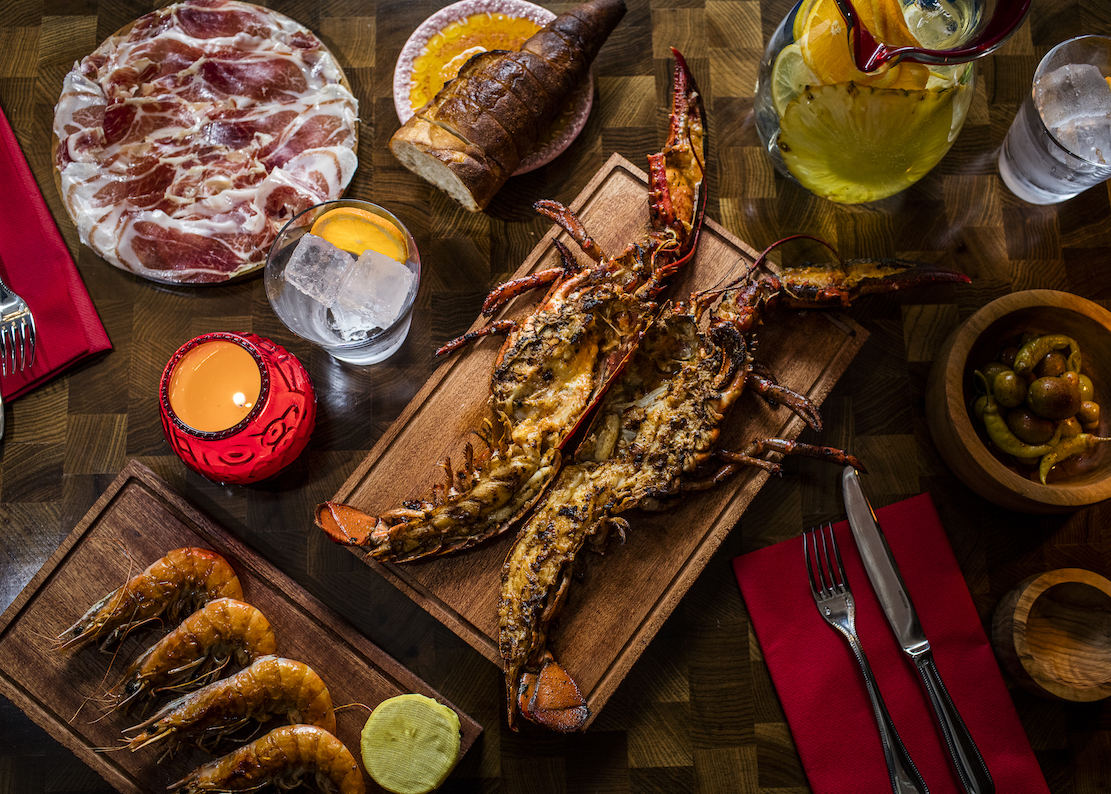 Gambas
al ajillo ($24) is another of the
beloved Spanish seafood dishes, here done
with blue, heads-on prawns on a la
plancha griddle with plenty of garlic,
arbequnia
olive oil and assertive seasonings that
infuse the shell and the body meat
completely. So, too, fideuá
de setas
($28) is a classic of toasted angel hair
spaghetti snapped into short pieces
and baked in a casserole with marinated
mushrooms and piquillo peppers that buoy the
smoky flavor of the pasta.
Gambas
al ajillo ($24) is another of the
beloved Spanish seafood dishes, here done
with blue, heads-on prawns on a la
plancha griddle with plenty of garlic,
arbequnia
olive oil and assertive seasonings that
infuse the shell and the body meat
completely. So, too, fideuá
de setas
($28) is a classic of toasted angel hair
spaghetti snapped into short pieces
and baked in a casserole with marinated
mushrooms and piquillo peppers that buoy the
smoky flavor of the pasta.
If paella
(below) is one of the defining tests
of a Spanish kitchen’s mettle— at least in
Valencia, where it’s prepared seaside over
an open fire—Hogan 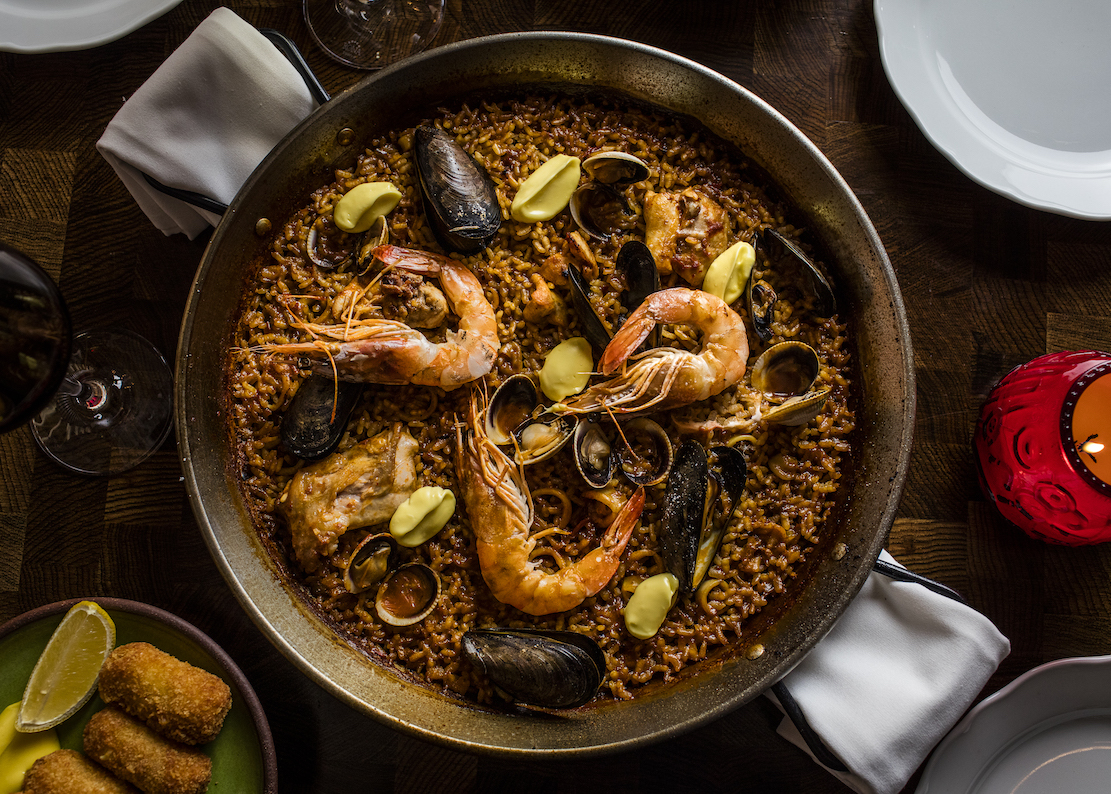 has succeeded in
making
it in paella
pans for two people
(though our table of four, enjoying other
main courses, all shared the dish
hungrily), somewhat drier than I’ve had in
Valencia but, in addition to the
requisite shellfish (including more of those
marvelous gambas), is studded with
morsels of rabbit ($72). At the bottom is
the crispy rice called
socarrat that
everyone fights over.
has succeeded in
making
it in paella
pans for two people
(though our table of four, enjoying other
main courses, all shared the dish
hungrily), somewhat drier than I’ve had in
Valencia but, in addition to the
requisite shellfish (including more of those
marvelous gambas), is studded with
morsels of rabbit ($72). At the bottom is
the crispy rice called
socarrat that
everyone fights over.
For dessert I’d highly recommend the
rum-soaked gâteau Basque with tangy sweet
marmalade ($12). The soft-serve ice
cream with nuts ($8) had an odd smoky flavor
not to my taste.
So,
after a brief but much needed hiatus,
El Quijote, red neon sign outside and all,
has come back full force with the
same engaging and happy ambience it had when
it was more a hang-out than a
dining experience. Now,
it joins a
handful of New York’s first-rate Spanish
restaurants and a place to celebrate
and to soak up the spirit of New York
hipster history.
Open for dinner nightly.
❖❖❖
ANOTHER VERMEER
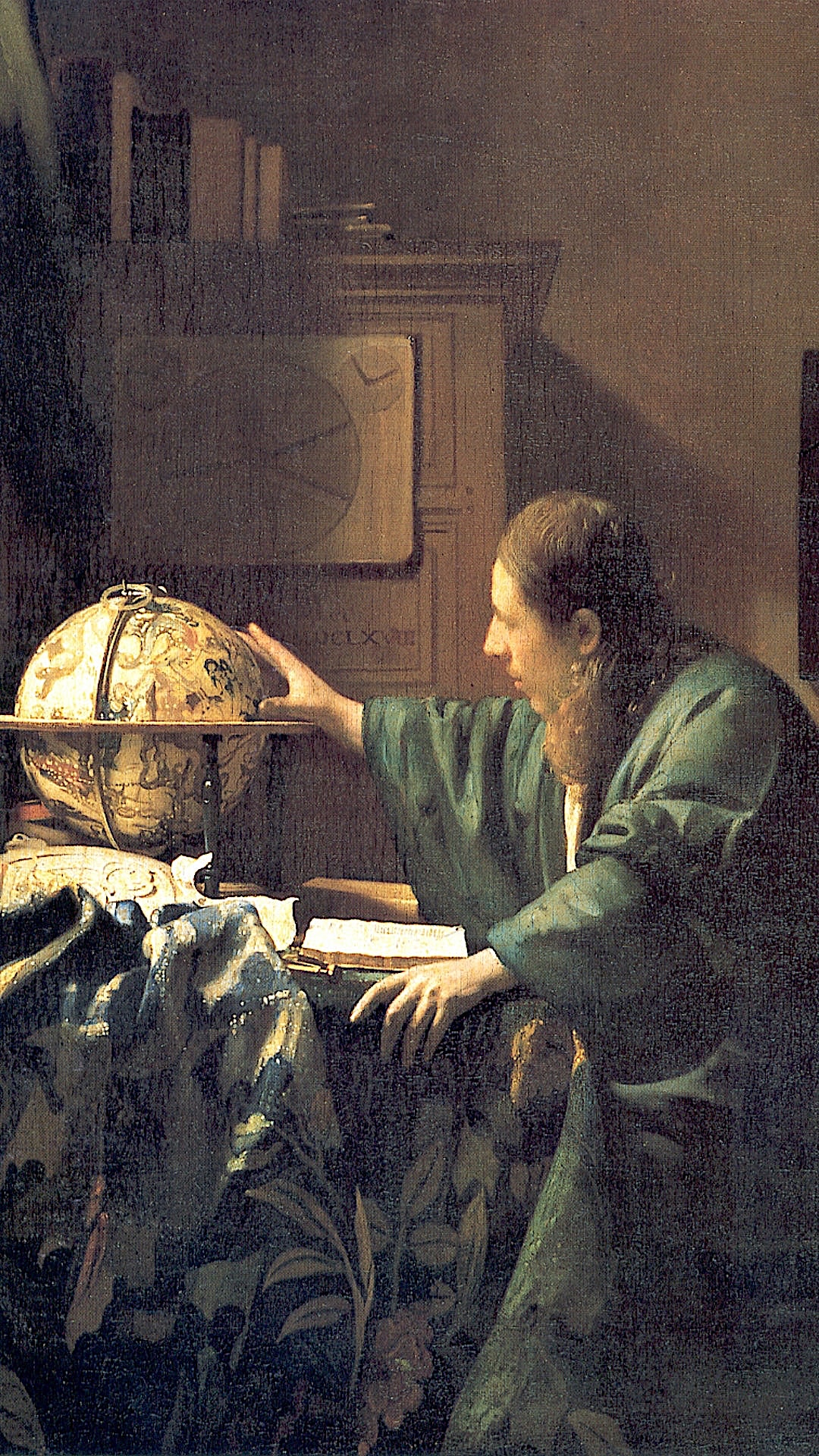
CHAPTER
SEVENTEEN
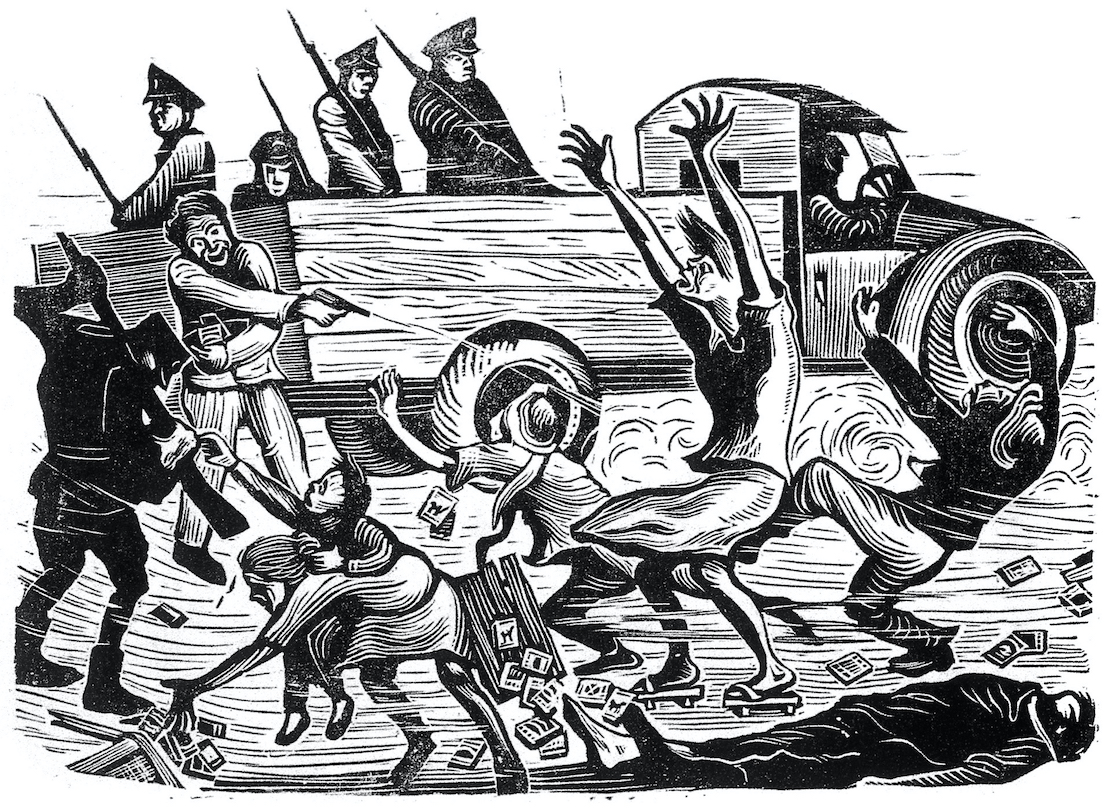
THE WHITE TERROR
Harry
Balaton
she already knew. She found out that the Russian
oil magnate Igor
Stepanossky, 54, had become very rich very soon
after the fall of the Soviet
Union, garnering multiple exclusive contracts
for oil companies and
transportation in Siberia. Stepanossky lived in
St. Petersburg and owned a
lavish apartment 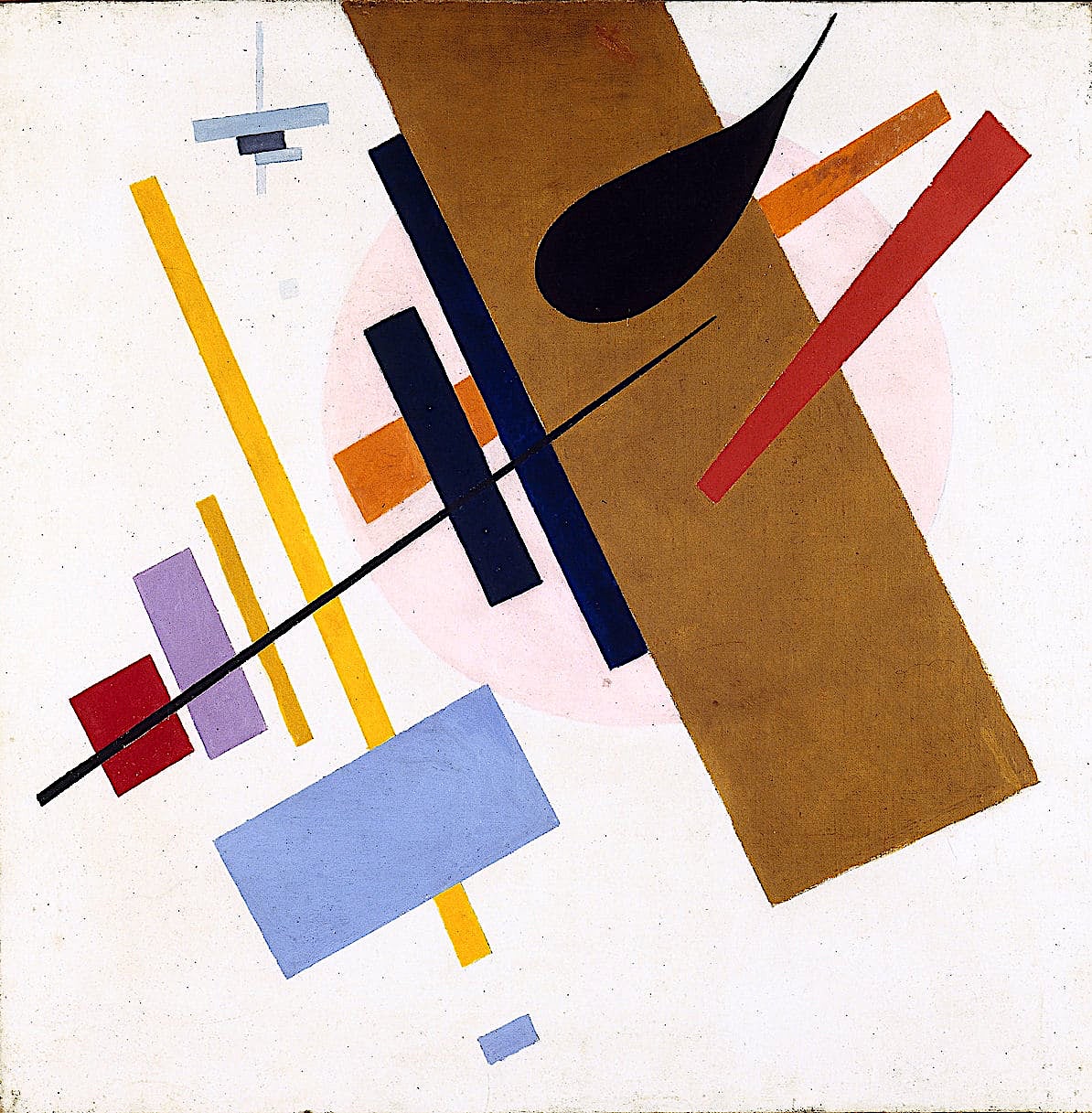 in Monaco, rarely
leaving Europe, but quickly entered the art
market, first buying minor works of 19th century
French artists, then
first-rate Impressionist art, and had amassed a
considerable collection of
works by the 20th century Russians—Kandinsky,
Chagall, and Malevich (right)—but he had
never bought any of 17th century Dutch masters.
in Monaco, rarely
leaving Europe, but quickly entered the art
market, first buying minor works of 19th century
French artists, then
first-rate Impressionist art, and had amassed a
considerable collection of
works by the 20th century Russians—Kandinsky,
Chagall, and Malevich (right)—but he had
never bought any of 17th century Dutch masters.
Nicholas
Danielides was from a well established Greek
shipping family that had acquired
its artwork after World War II, including ancient
Greek and Persian statuary,
and his collection of post-war European and
American art was of the first rank.
It had long been suspected that much of his
collection had been stolen by his
father, perhaps bought from the Nazis, but as long
as the works stayed in
Greece, authorities asked few questions.
At only 43 years of age, Danielides was
still a bachelor and considered
very much a playboy, with the requisite yachts and
homes all over the world,
with his base in Athens.
Jan
Dorenbosch, 65, was the son of a Dutch businessman
who was alleged to have had
business with Germany during the war but was never
convicted of any crime.
There were even accusations—largely
circumstantial—that his company’s
researchers worked with their Nazi colleagues on
the most horrific medical
experiments done on concentration camp victims.
 Since
then his son had attempted to keep the Dorenbosch
name out of the newspapers
and was as secretive about his art holdings as he
was about his privately owned
pharmaceutical company. He lived in Amsterdam.
Since
then his son had attempted to keep the Dorenbosch
name out of the newspapers
and was as secretive about his art holdings as he
was about his privately owned
pharmaceutical company. He lived in Amsterdam.
João
Correa’s fortune came largely from destruction of
Brazil’s rain forest, which
was losing the equivalent of 200 football fields
and more each day. Not only
did Correa, 40, provide the trucks,
tractors and cutting machinery for the
de-forestation but he also was South
America’s largest producer of lumber. He
protected himself from further scrutiny by buying
off politicians, philanthropy
and supporting the arts, often with donations to
museum from his own superb collection
of South American and African works.
Robert
Loudon, 62, had inherited his immense wealth from
his mother, who had founded
the Lavande cosmetics company, with branches and
laboratories in six countries,
including France, Russia and China. Largely he
devoted his time to philanthropy
and his art collection, which focused on Medieval
and Renaissance paintings and
sculpture. In the art world he was considered very
open about his collections,
whose works he often shared with museums.
Nothing had ever appeared about Louden to
suggest he had engaged in any
criminal activities beyond a youthful penchant for
orgies back in the 1970s at
his Gramercy Park townhouse and villa in St.
Barts.
Katie
saved Hai Shui for last, hoping the hypotheses
that came out of the Fordham
meeting would give her insight into the man.
But there was very little on Shui
in the Times
archives or business
magazines and only scattered references in the art
journals. He was considered
a very astute buyer with catholic tastes, though
his Chinese art holdings were
by far the largest in his collection. She did find
that he was worth upwards of
$7 billion, according to the Hurun Report,
which kept track of the wealth of Chinese tycoons,
placing him first among
Taiwanese billionaires.
insight into the man.
But there was very little on Shui
in the Times
archives or business
magazines and only scattered references in the art
journals. He was considered
a very astute buyer with catholic tastes, though
his Chinese art holdings were
by far the largest in his collection. She did find
that he was worth upwards of
$7 billion, according to the Hurun Report,
which kept track of the wealth of Chinese tycoons,
placing him first among
Taiwanese billionaires.
As
Prof. Lìu had said, many of the Shui families had
settled in Taiwan in the
early 17th century, during Vermeer’s lifetime.
From what Katie could gather, Hai Shui was
now the most eminent member
of his extended family, which began in the
petroleum business before World War
II, when Shui was a boy living in Beijing, at a
time when Japan held Taiwan as
a colony. After
the war, the Chinese
Communists took control of the mainland, and in
1949 the remnants of the
opposing Chinese Nationalists under Chiang
Kai-Shek evacuated to Taiwan, when
the Shui family moved back to the island.
For the time being, Britain had so far
maintained control of Hong
Kong.
Hai
Shui became president and chairman of the board of
the family business in 1980
and expanded its petroleum interests into
chemicals, becoming immensely wealthy
as Asia developed insatiable energy requirements,
needed to fuel their
developing economies.
Katie
put in a call to Prof. Lìu to ask if she knew
anything more about the Shui
family on Taiwan.
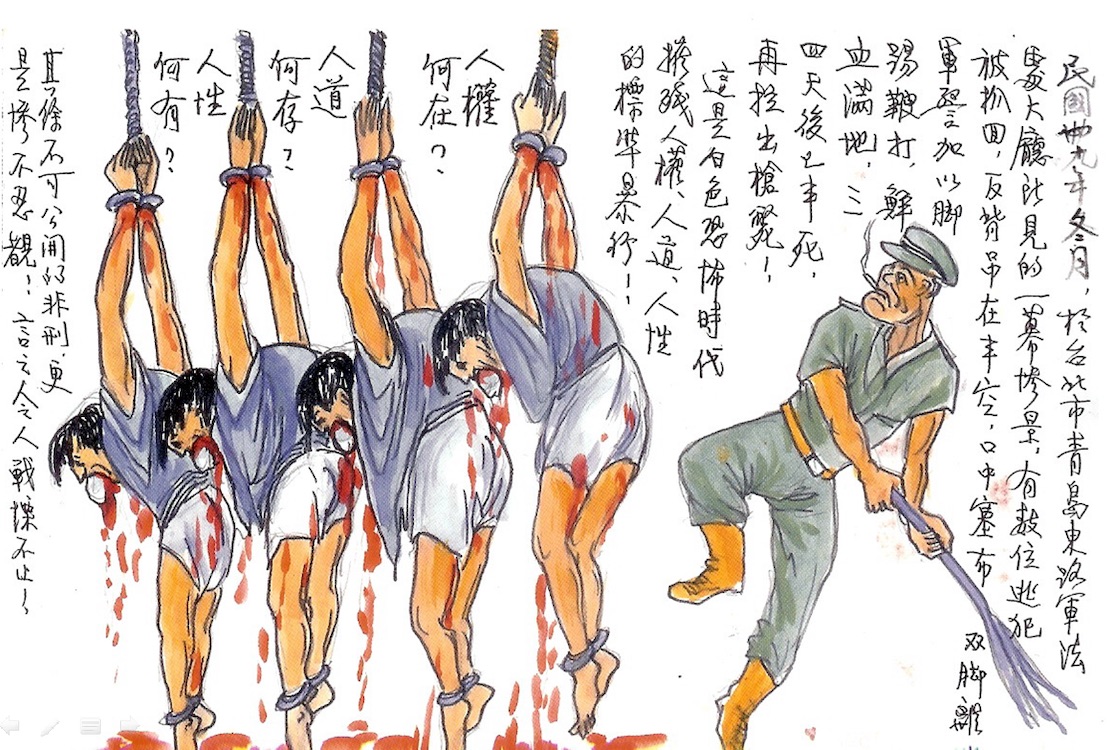 “Not
much, really,” she said. “They were among the two
million soldiers,
politicians, and business elite who emigrated to
Taiwan after the communists
took over the mainland. They all brought with them
a tremendous amount of
national treasures and grabbed up most of China’s
gold and foreign currency
reserves. Then civil war set in and Chiang
Kai-Sheik’s Nationalists declared
martial law on the island. It was called the
‘White Terror,’ and it’s estimated
up to 140,000 people suspected of communist
leanings were persecuted or killed.
Martial law was not repealed until 1987.”
“Not
much, really,” she said. “They were among the two
million soldiers,
politicians, and business elite who emigrated to
Taiwan after the communists
took over the mainland. They all brought with them
a tremendous amount of
national treasures and grabbed up most of China’s
gold and foreign currency
reserves. Then civil war set in and Chiang
Kai-Sheik’s Nationalists declared
martial law on the island. It was called the
‘White Terror,’ and it’s estimated
up to 140,000 people suspected of communist
leanings were persecuted or killed.
Martial law was not repealed until 1987.”
“So,
obviously, the Shuis were able to avoid the worst
of that?”
“They
must have been very well
connected to
Chiang Kai-Shek (below), yes. I daresay
they survived by cooperating with the
Nationalists in calling out their own business
competitors.”
“And
got richer because of it?”
“Yes,
they prospered and helped fuel Taiwan’s boom in
the 1970s, when, after Japan,
it became the second fastest growing economy in
Asia. Being in petro-chemicals,
the Shuis were very well positioned to become
immensely wealthy.”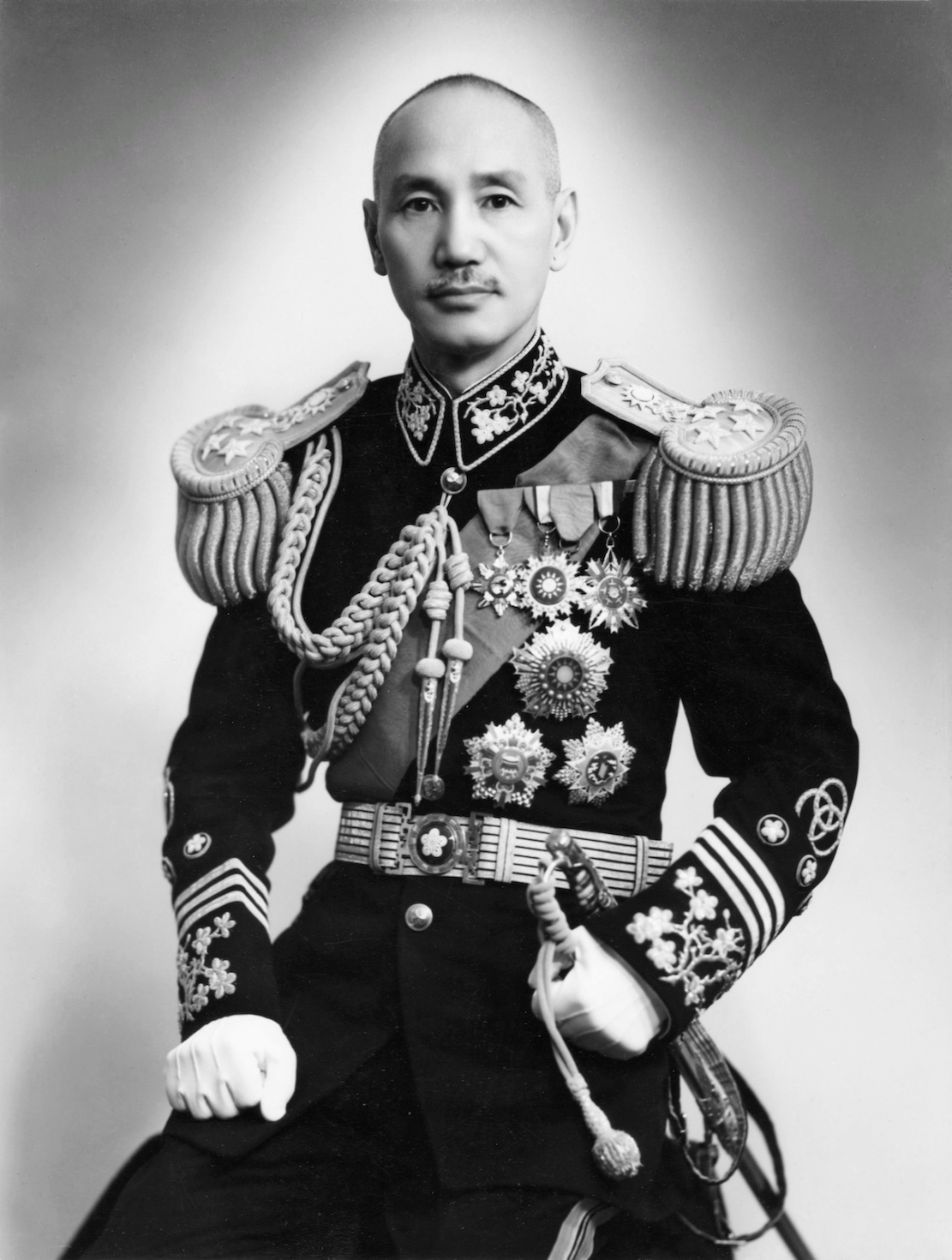
As
agreed, Katie shared her research with John
Coleman, who in turn told Katie
that most of Hai Shui’s art collection was Chinese
sculpture, paintings, books,
porcelain, jade, with a smattering of European
art, mostly modern. Katie
dutifully told Coleman about the “sui jen”
connection proposed by Prof. Lìu, which the editor
found farfetched.
“I
get what you say about the alchemy in the
painting,” said Coleman, “but the
rest really seems an overly imaginative stretch.”
“It
doesn’t impress you that the globe on the table
just happens to be turned to
China and the Chinese words are painted right next
to it?” asked Katie. “From
what I know of Renaissance artists everything in a
painting had a symbolic meaning
or reference.”
“Yes,
that’s true, and maybe those words are phonetic
Chinese
for ‘water’ and ‘gold,’ but pegging that to Hai
Shui doesn’t really add
up for me, just because the words and his name are
similar. How about I quote
you about the Chinese connection but not about
Shui?”
“Fair
enough,” said Katie, “but I think the credit
should go to the professors. I’ll
give you their numbers if you like.”
“And
that won’t compromise your story?”
“John,
I haven’t got much of a story yet. I’m not doing a
scholarly paper on the
painting. I’m
seeing where all this goes
and where it ends up. You’re reporting the news.”
“Well,
thank you for that. Let’s keep in touch. I’ll let
you know if I hear anything
from the mystery woman.”
“I
don’t suppose the mystery woman will speak to me?”
“That
I doubt. She said she was only speaking to me at
this point.”
“Well,
with all due respect,” said Katie, “why is she
telling only Art Today
rather than first go to the New York
Times or the Wall Street
Journal?”
“I
don’t know and I don’t ask. As long as Art
Today keeps breaking these stories, I’m
happy. I’m
sure she knows how to reach the Times and
the Journal—”
“—And
McClure’s,”
Katie inserted.
“And
McClure’s. They’ll
all stay
titillated without any inside access, which sure
makes me look like the big
cheese in the art media. I can live with that.”
© John Mariani, 2016
❖❖❖
Ricasoli Chianti Gran Selezione
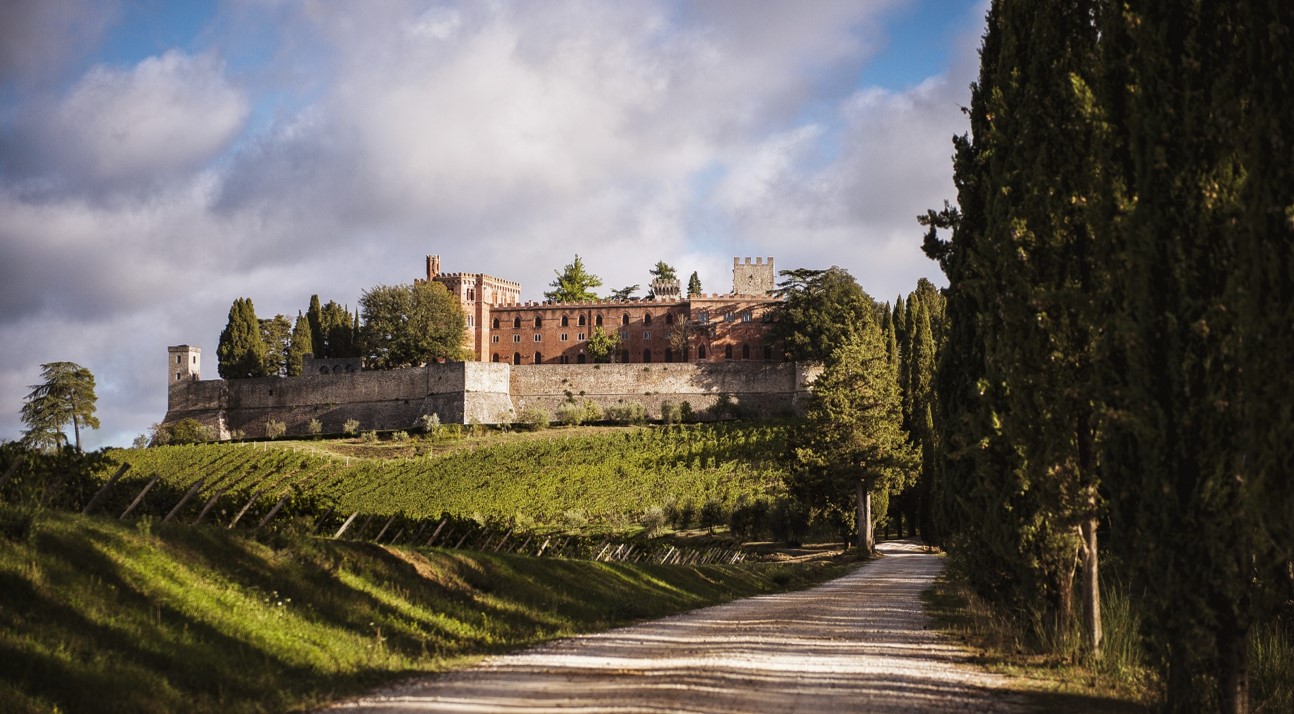
By
John Mariani
More
than once I’ve declared that Chianti would be
my desert
island choice for a wine I could drink
everyday with pleasure and considerable
variety. Here are a few basic facts about
Chianti in the third decade of the
21st century: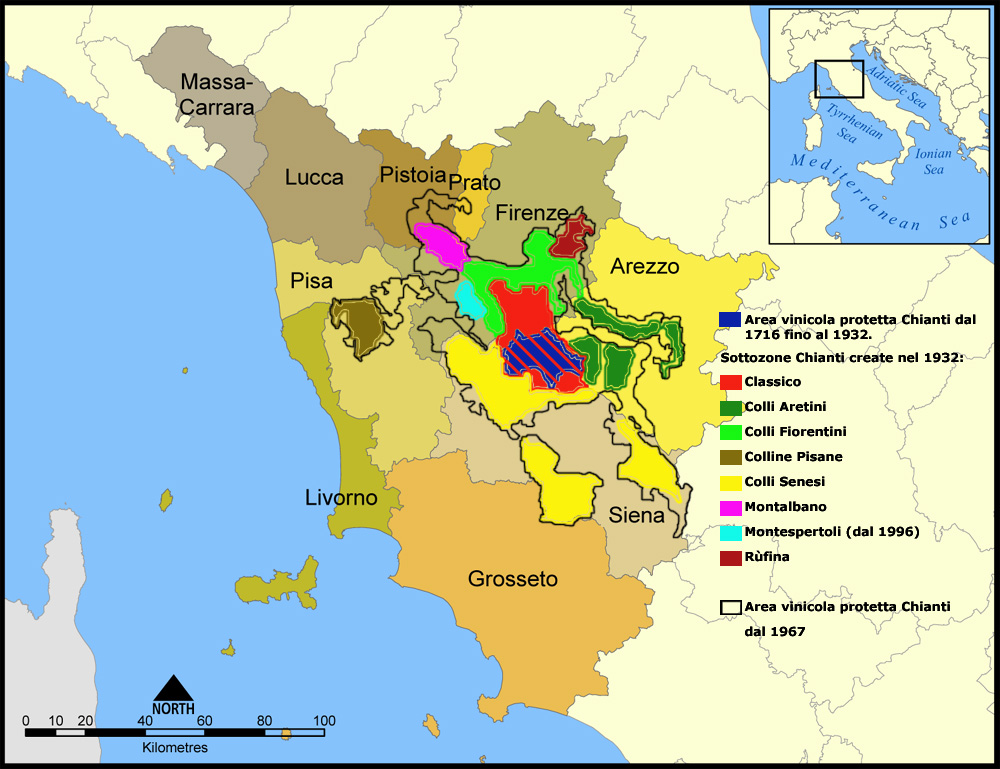
— Chianti is an
appellation under Italian wine laws for a
topographical region with eight
distinct zones, with Chianti Classico the best
known (and most promoted),
although Italian wine laws, rather too
liberally, now grant the prestigious
DOCG appellation to both Chianti Classico and
Chianti.
— There are now 515
vine
growers in the Chianti Classico region, the
majority of them both growing
grapes and vinifying them into wine. Forty
percent are certified organic. There
are only 7,000 hectares of vineyards
representing less than 15% of its total
surface in Tuscany.
— Chianti Classico DOCG
must be produced with Sangiovese (minimum 80% up
to 100%) and, as an option,
other red varieties (up to 20%). Among the
latter, there are the indigenous
ones (Canaiolo, Colorino, Mammolo, Malvasia
Nera, Pugnitello and Foglia Tonda),
and the international ones (Cabernet Sauvignon,
Merlot, Cabernet Franc, Syrah
and Petit Verdot). White grape varieties, once
permitted, have not been since
2006.
— For this century the U.S. has been the top Chianti Classico market. Over one-third of Chianti Classico bottles are sold in America; second place is Italy itself.
Chianti Classico (hereafter “CC”) is a very old appellation, dating to 1716, when the territory was delimited, for the first time, by an edict of the Grand Duke Cosimo III of the Medici family, fixing the borders of the production area. Many of the best known producers, like Antinori, Ruffino, Querciabella, Fontodi, Castello di Volpaia and Badia a Coltibuono, have a significant grasp of the world market.
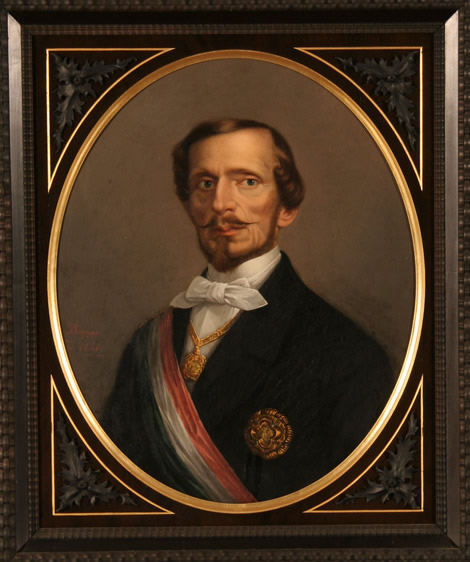 Barone Ricasoli Castello di Brolio is
not only the oldest winery
in Italy (since 1141), but the composition
“recipe” of Chianti was established
by Ricasoli (left) as of 1872. The estate
itself, with overlapping Romanesque,
Neo-Gothic and 19th century Tuscan architecture,
is located on a spread of more than 1,200 hectares
that include 240 hectares of vineyards and 26 of
olive groves in the commune of
Gaiole. (It is a beautiful castle you can visit
year-round, except January,
with an excellent Tuscan restaurant.)
Barone Ricasoli Castello di Brolio is
not only the oldest winery
in Italy (since 1141), but the composition
“recipe” of Chianti was established
by Ricasoli (left) as of 1872. The estate
itself, with overlapping Romanesque,
Neo-Gothic and 19th century Tuscan architecture,
is located on a spread of more than 1,200 hectares
that include 240 hectares of vineyards and 26 of
olive groves in the commune of
Gaiole. (It is a beautiful castle you can visit
year-round, except January,
with an excellent Tuscan restaurant.)Like most of its competing CC estates, Ricasoli has been committed to sustainability and biodiversity, with 70% covered with woods and Mediterranean scrub they characterize as a “huge green lung.”
Ricasoli produces a wide array of CCs (as well as some
 white wine), and its
Gran Selezione series is not only its
top-of-the-line bottlings but readily compares
with many so-called Super
Tuscans in the market without resorting to that
specious name.
white wine), and its
Gran Selezione series is not only its
top-of-the-line bottlings but readily compares
with many so-called Super
Tuscans in the market without resorting to that
specious name. Castello di Brolio Chianti
Classico Gran Selezione 2018 ($70)—Is a blend of a
minimum
of 90% Sangiovese, with 5% Cabernet Sauvignon to
give it a bit more tannin and
5% Petit Verdot for richer fruit. This is the
estate’s flagship wine, created
from a selection of estate-grown grapes from
different sections, produced only
in the best years. It certainly compares well
with some of the finest wines
from Bolgheri.
CeniPrimo Chianti Classico Gran
Selezione 2018 ($85)—This is 100% Sangiovese from
fruit grown in the southern
valley of the River Arbia,
which
has a complex soil composition of silty
deposits and few stones, with some clay deposits
and limestone. At 14.5%
alcohol, this is at the edge of where CCs are
balanced and is the brawniest of
Ricasoli’s CCs, which will still improve within
the next three to five years.
Colledilà
Gran Selezione 2018 ($85)—Also
100%
Sangiovese from a terroir quite different, with
more clay and limestone rich in
calcium carbonate and poor in organic material.
It spent 22
months in 500-litre tonneaux, of
which 30% new and 70% second passage. Its
13.5% alcohol is perfect to show both its CC
traditions and its modern
elegance.
Roncicone Gran Selezione 2018 ($85) —Another 100% Sangiovese,
from soil rich in sandy marine deposits and sea-smoothed
stones with substantial organic
matter content. This gives a minerality to the
wine that makes it multi-layered
in its flavors, with restrained fruit. The 14%
alcohol bolsters its elements
without pushing any out of synch.
❖❖❖

❖❖❖
Any of John Mariani's books below may be ordered from amazon.com.
 The Hound in Heaven
(21st Century Lion Books) is a novella, and
for anyone who loves dogs, Christmas, romance,
inspiration, even the supernatural, I hope you'll find
this to be a treasured favorite. The story
concerns how, after a New England teacher, his wife and
their two daughters adopt a stray puppy found in their
barn in northern Maine, their lives seem full of promise.
But when tragedy strikes, their wonderful dog Lazarus and
the spirit of Christmas are the only things that may bring
his master back from the edge of despair.
The Hound in Heaven
(21st Century Lion Books) is a novella, and
for anyone who loves dogs, Christmas, romance,
inspiration, even the supernatural, I hope you'll find
this to be a treasured favorite. The story
concerns how, after a New England teacher, his wife and
their two daughters adopt a stray puppy found in their
barn in northern Maine, their lives seem full of promise.
But when tragedy strikes, their wonderful dog Lazarus and
the spirit of Christmas are the only things that may bring
his master back from the edge of despair. WATCH THE VIDEO!
“What a huge surprise turn this story took! I was completely stunned! I truly enjoyed this book and its message.” – Actress Ali MacGraw
“He had me at Page One. The amount of heart, human insight, soul searching, and deft literary strength that John Mariani pours into this airtight novella is vertigo-inducing. Perhaps ‘wow’ would be the best comment.” – James Dalessandro, author of Bohemian Heart and 1906.
“John Mariani’s Hound in Heaven starts with a well-painted portrayal of an American family, along with the requisite dog. A surprise event flips the action of the novel and captures us for a voyage leading to a hopeful and heart-warming message. A page turning, one sitting read, it’s the perfect antidote for the winter and promotion of holiday celebration.” – Ann Pearlman, author of The Christmas Cookie Club and A Gift for my Sister.
“John Mariani’s concise, achingly beautiful novella pulls a literary rabbit out of a hat – a mash-up of the cosmic and the intimate, the tragic and the heart-warming – a Christmas tale for all ages, and all faiths. Read it to your children, read it to yourself… but read it. Early and often. Highly recommended.” – Jay Bonansinga, New York Times bestselling author of Pinkerton’s War, The Sinking of The Eastland, and The Walking Dead: The Road To Woodbury.
“Amazing things happen when you open your heart to an animal. The Hound in Heaven delivers a powerful story of healing that is forged in the spiritual relationship between a man and his best friend. The book brings a message of hope that can enrich our images of family, love, and loss.” – Dr. Barbara Royal, author of The Royal Treatment.
 |
The Encyclopedia of American Food and Drink by John F. Mariani (Bloomsbury USA, $35) Modesty forbids me to praise my own new book, but let me proudly say that it is an extensive revision of the 4th edition that appeared more than a decade ago, before locavores, molecular cuisine, modernist cuisine, the Food Network and so much more, now included. Word origins have been completely updated, as have per capita consumption and production stats. Most important, for the first time since publication in the 1980s, the book includes more than 100 biographies of Americans who have changed the way we cook, eat and drink -- from Fannie Farmer and Julia Child to Robert Mondavi and Thomas Keller. "This book is amazing! It has entries for everything from `abalone' to `zwieback,' plus more than 500 recipes for classic American dishes and drinks."--Devra First, The Boston Globe. "Much needed in any kitchen library."--Bon Appetit. |
"Eating Italian will never be the same after reading John Mariani's entertaining and savory gastronomical history of the cuisine of Italy and how it won over appetites worldwide. . . . This book is such a tasteful narrative that it will literally make you hungry for Italian food and arouse your appetite for gastronomical history."--Don Oldenburg, USA Today. "Italian
restaurants--some good, some glitzy--far
outnumber their French rivals. Many of
these establishments are zestfully described
in How Italian Food Conquered the World, an
entertaining and fact-filled chronicle by
food-and-wine correspondent John F.
Mariani."--Aram Bakshian Jr., Wall Street
Journal.
"Equal parts
history, sociology, gastronomy, and just
plain fun, How Italian Food Conquered the
World tells the captivating and delicious
story of the (let's face it) everybody's
favorite cuisine with clarity, verve and
more than one surprise."--Colman Andrews,
editorial director of The Daily
Meal.com. "A fantastic and fascinating
read, covering everything from the influence
of Venice's spice trade to the impact of
Italian immigrants in America and the
evolution of alta cucina. This book will
serve as a terrific resource to anyone
interested in the real story of Italian
food."--Mary Ann Esposito, host of PBS-TV's
Ciao
Italia. "John Mariani has written the
definitive history of how Italians won their
way into our hearts, minds, and
stomachs. It's a story of pleasure over
pomp and taste over technique."--Danny Meyer,
owner of NYC restaurants Union Square
Cafe, The Modern, and Maialino.
|
 |
 |
 |
 |
 |
 |
 Everett Potter's Travel Report:
Everett Potter's Travel Report: 
 Eating Las
Vegas JOHN CURTAS has been covering
the Las Vegas food and restaurant scene
since 1995. He is the co-author of EATING LAS
VEGAS – The 50 Essential Restaurants (as
well as the author of the Eating Las
Vegas web site: www.eatinglasvegas.
He can also be seen every Friday morning as
the “resident foodie” for Wake Up With the
Wagners on KSNV TV (NBC) Channel 3 in
Las Vegas.
Eating Las
Vegas JOHN CURTAS has been covering
the Las Vegas food and restaurant scene
since 1995. He is the co-author of EATING LAS
VEGAS – The 50 Essential Restaurants (as
well as the author of the Eating Las
Vegas web site: www.eatinglasvegas.
He can also be seen every Friday morning as
the “resident foodie” for Wake Up With the
Wagners on KSNV TV (NBC) Channel 3 in
Las Vegas.
MARIANI'S VIRTUAL GOURMET
NEWSLETTER is published weekly. Publisher: John Mariani. Editor: Walter Bagley. Contributing Writers: Christopher
Mariani, Misha Mariani, John A. Curtas, Gerry Dawes, Geoff Kalish.
Contributing
Photographer: Galina Dargery. Technical
Advisor: Gerry
McLoughlin.
If you wish to subscribe to this
newsletter, please click here: http://www.johnmariani.com/subscribe/index.html
© copyright John Mariani 2022

